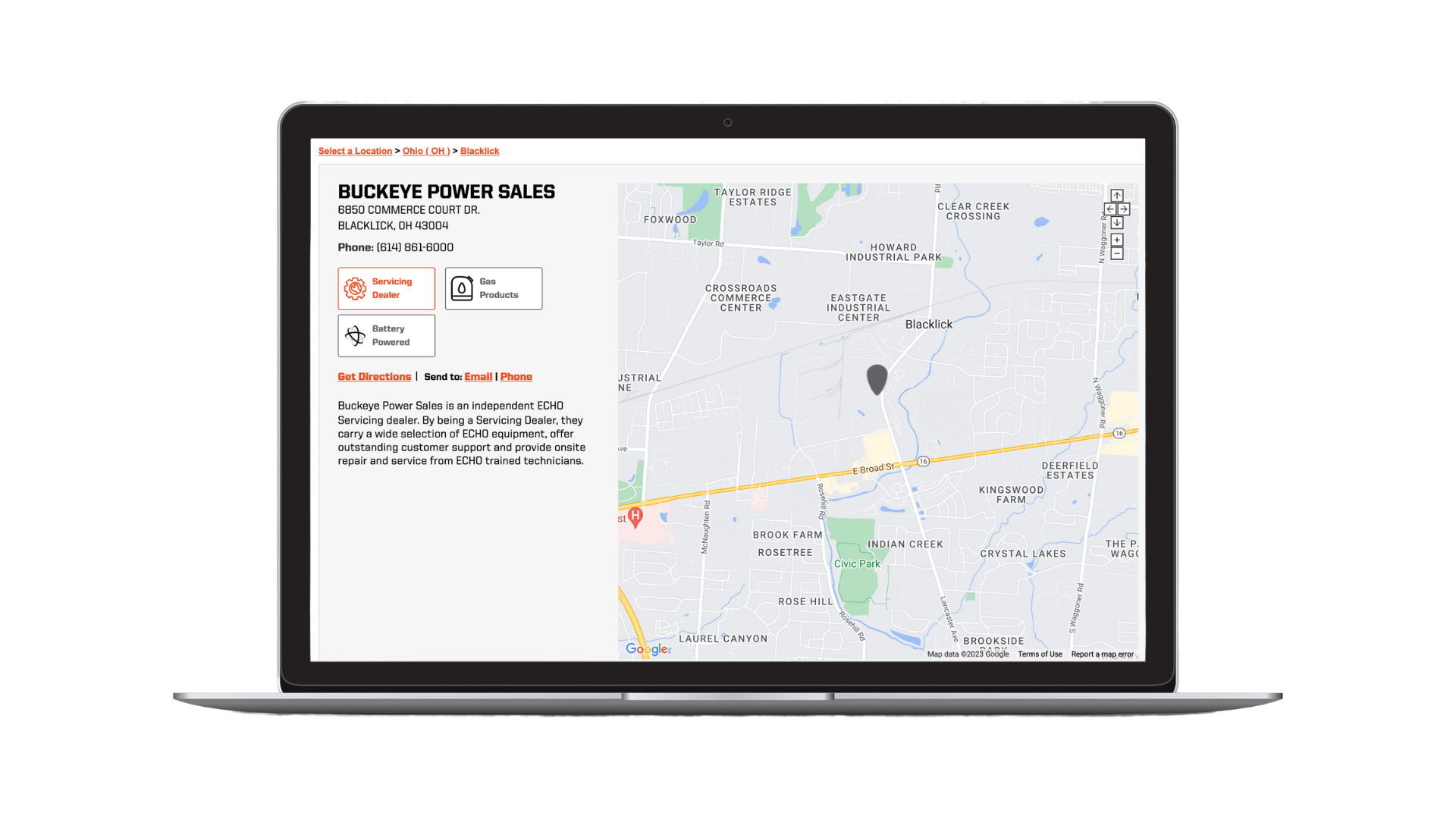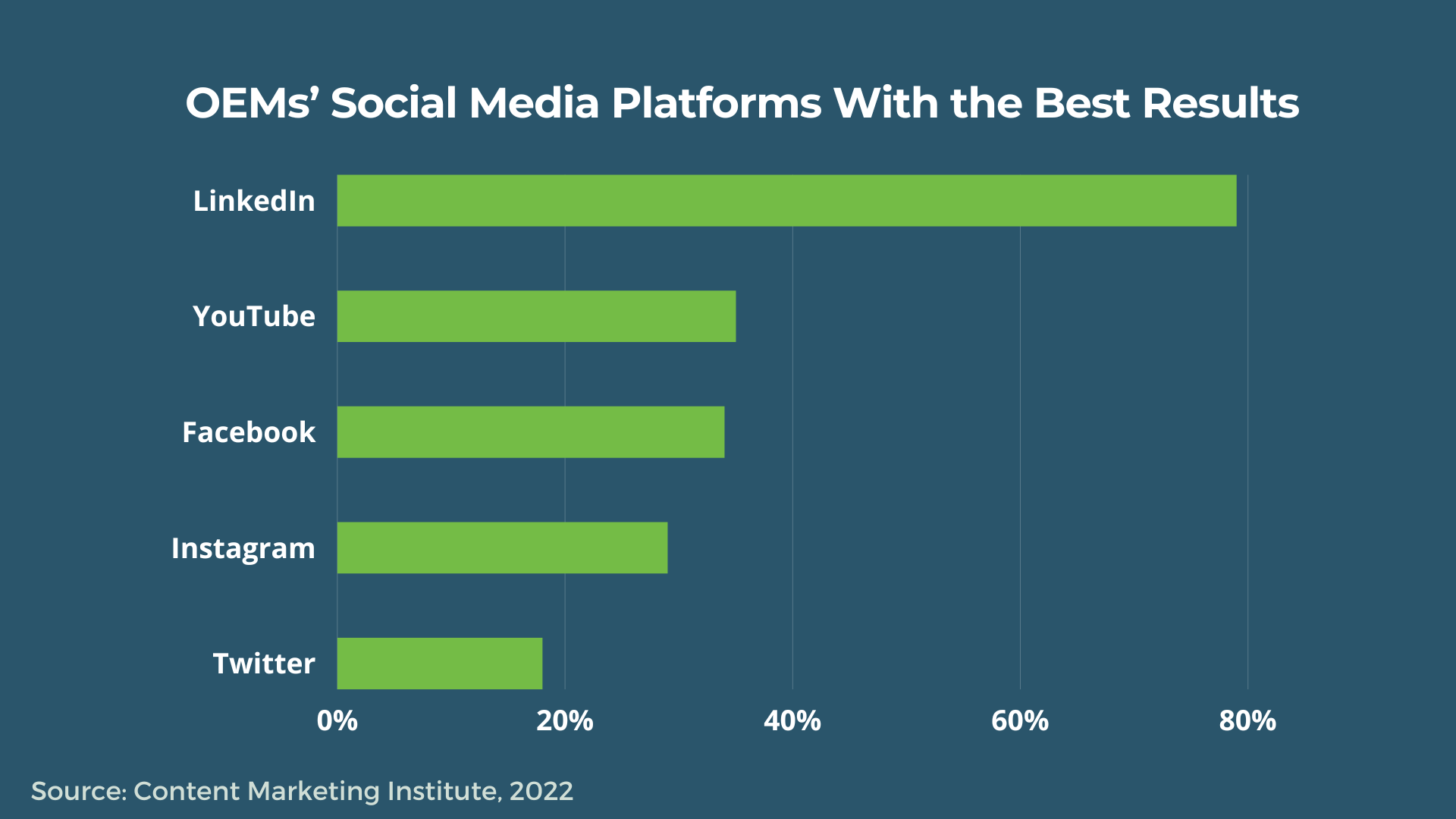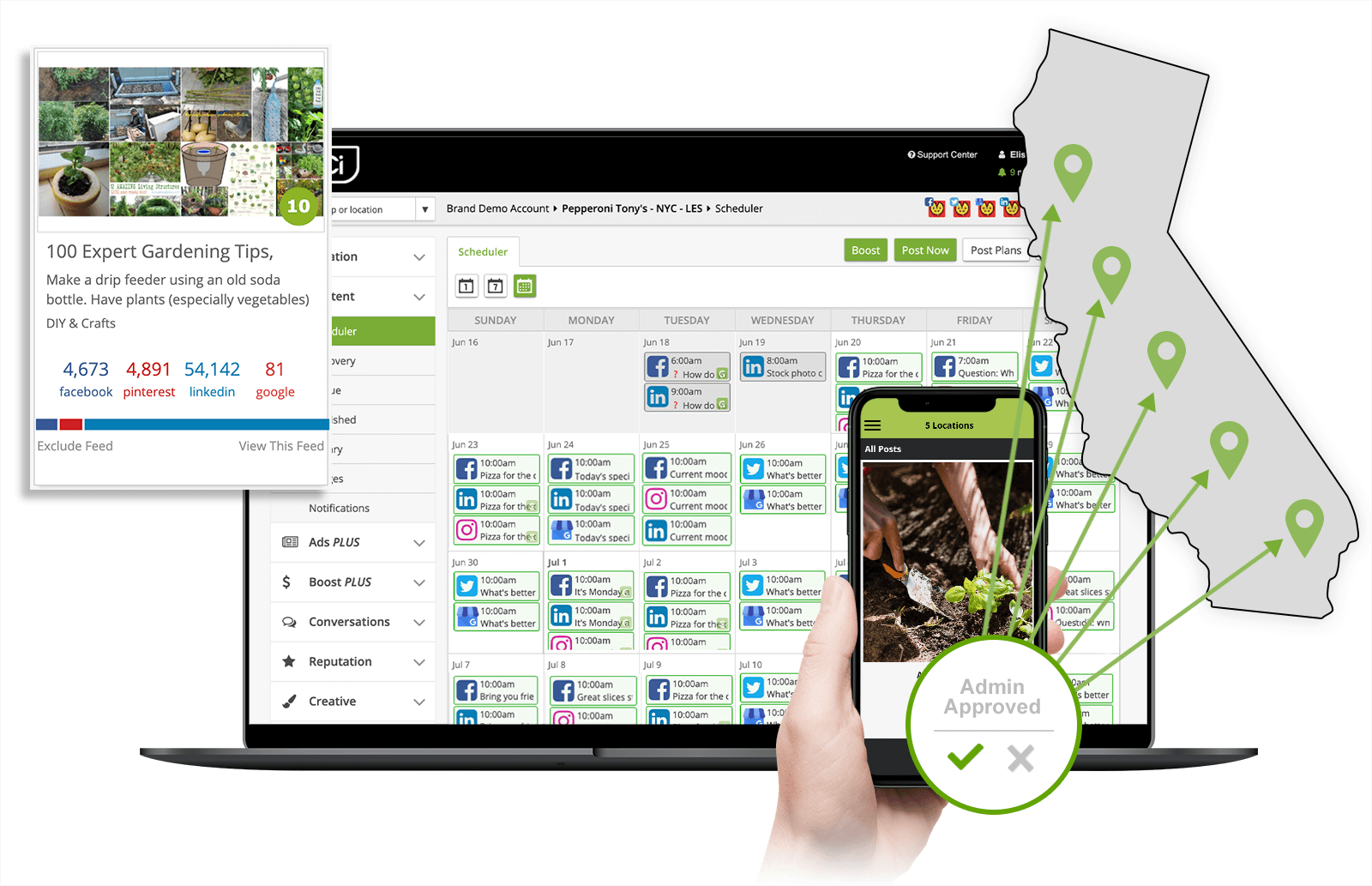What Is OEM Marketing + Why You Need It
Table of Contents
Original equipment manufacturers (OEMs) often have complex and expensive products, niche markets, and lengthy sales cycles. These factors make garnering attention, improving brand awareness, and winning sales challenging. That’s why you need an OEM marketing strategy.
In 2022, 98 percent of manufacturers generated sales-qualified leads via digital marketing. If your OEM doesn’t have a digital marketing plan, you’re likely losing sales to competitors who do.
In this blog, we’ll define OEM marketing and the top strategies to implement to improve your manufacturing company’s marketing efforts and return on investment (ROI).
OEM Marketing Defined
Before defining OEM marketing, let’s ensure we have the same definition of original equipment manufacturers.
OEMs are often large manufacturers that generate completed products and then sell them through a vast network of dealers they don’t own. Automotive and heavy equipment manufacturers are often considered OEMs.
Note that sometimes, OEMs are considered companies that produce components or parts used in another company’s end product, which gets sold to consumers. In this article, we’re using the first definition.
OEM marketing is the process of meeting consumers where they’re searching online by producing thought-leadership content about your products and industry and partnering with local dealers to help distribute said content.
The Four OEM Marketing Must-Do’s
Below are four OEM marketing tactics that your manufacturing company can implement to increase brand awareness, target your audiences better, and improve sales.
1. Partner With Local Dealers
Some OEMs have branded stores that they own and operate, such as car dealerships like Ford. However, many manufacturers don’t own their stores and rely on local dealers to sell their products.
Therefore, OEMs must partner with local dealers to ensure they’re helping market and sell your product. In return, the dealer will also see an increased revenue from selling your products.
We recommend starting a co-op marketing or co-op program to get the most out of your partnership with dealers. A co-op program is a collaboration between OEMs and authorized local dealers where both contribute resources to craft and execute marketing campaigns.
To have successful co-op programs, we recommend you do the following:
- Establish brand guidelines and standards
- Give dealers exposure through special promotions and marketing campaigns
- Define local markets and audiences together
- Have a digital asset management (DAM) program to supply dealers with digital content
When done correctly, a co-op program can help both parties boost brand awareness and sales. Read our article on co-op programs for more details on how to run one successfully.
2. Implement SEO Tactics
Another necessary OEM marketing tactic is search engine optimization (SEO). There are two types of SEO that OEMs should be concerned with — general SEO and local SEO. Let’s get into both.
General SEO
General SEO, often simply called SEO, is the process of increasing the quantity and quality of organic traffic to your website. The main goal of SEO is to appear high on search engine results pages (SERPs).
Ranking high in the SERP pays dividends since, on average, the top organic ranking page gets 27.6 percent of all traffic, while the top three results receive 54.4 percent.
Getting organic traffic starts with ranking for keywords. To rank for keywords, you must:
- Get a baseline for which keywords you’re already ranking for
- Put yourself in your customers’ shoes and consider the search queries they’re entering
- Examine your competitors’ keywords and target those
- Use SEO tools like Google Search Console, Semrush, or Ahrefs
After gathering and analyzing keywords, you must create content that will rank on the SERP. More on content creation later.
For general SEO, you also need to consider on-page SEO, which includes schema markup, an internal link strategy, page speed, and mobile responsiveness.
Once you’ve implemented these on-page SEO tactics and produced keyword-driven content, you should see an increase in rank for those keywords, leading to a rise in search traffic, often equating to more conversion and brand recognition.
Local SEO
We’ve discussed general SEO tactics, but now it’s time to focus on local SEO or local search. Local SEO is the process of optimizing your website for local search results. Local SEO efforts are particularly relevant to OEMs that own their local stores.
Depending on your co-op program, you can also help your partnered dealers with their local SEO — gaining you more traffic and sales.
One prominent local SEO ranking factor is ensuring that your local listings — particularly your Google Business Profiles (GBPs) — are claimed and optimized.
Our research found that businesses ranking in Google’s 3-Pack receive 126 percent more traffic and 93 percent more conversion-oriented actions (calls, website clicks, and driving directions) than businesses ranked 4-10.
You can read our article on optimizing your local listings for more details on ranking well in local search.
Another local SEO tactic is having locators and local pages. Locators are webpages that show where consumers can purchase your OEM’s products.
Local pages are individual landing pages dedicated to one store and supply essential information consumers want, like location, phone number, store hours, in-stock products, etc. Here’s an example of an ECHO-USA dealer local page:
Locators and local pages help your local businesses appear in relevant organic and local search results, producing more leads and building your reputation. Download The Top 10 Things You Should Be Doing in Local SEO Now for more local search tactics and strategies.
3. Utilize Social Media
We’d be remiss not to discuss social media in today’s OEM marketing landscape. In 2022, more than half of manufacturing marketers increased their social media efforts. Thus, if you’re not posting on social media, your competitors most likely are and could be taking potential customers from you.
According to one survey, these were the top-performing social media platforms for manufacturers in 2022 and can help you decide which platforms to focus your efforts on:
Another benefit of social media is that most platforms have native targeting advertising capabilities. These platforms and their ad tools allow you to build targeted audiences based on people’s interests and behaviors or target specific areas via geofencing. These target audiences often lead to better lead generation and often more sales. Read our article on social advertising for more details on correctly delivering social media ads.
While social advertising is important, leveraging organic social efforts is also necessary. Publishing on your social media pages or via your local dealers’ social pages is necessary for any successful OEM marketing strategy.
For more details on organic social strategies, read our blog post on social media tips for distributor brand marketers.
4. Produce High-Quality Content
We’ve noted the need to publish content on search engines and social media, but what should this content consist of?
High-quality, engaging content like online calculators or videos performs best. Our The Secrets of Facebook Post Engagement found that posts with videos have twice the correlation with engagement as posts with photos.
Product demonstrations, how-to videos, and user-generated content (UGC) are popular with manufacturers because they promote your products, are often educational, and help you become a thought leader in your industry.
Manufacturers also need to promote visually appealing content, such as:
- Infographics
- Data studies and visualizations
- Product images
- Slideshows
- Branded images
To get the most out of your content, repurpose it across multiple platforms, such as on your blog, social media channels, and email campaigns.
Growing Your OEM Marketing Strategy
In the ever-evolving manufacturing landscape, OEM marketing is a critical strategy to seize opportunities and secure your brand’s future. As mentioned, complex products, niche markets, and lengthy sales cycles are challenges OEMs face.
If you’re a smaller manufacturer, often called a distributor brand, you’ll need the right technology to get your OEM marketing program off the ground. That’s where SOCi comes in!
SOCi is the CoMarketing Cloud for multi-location enterprises. Through SOCi, your distributor brand can better stand out to local consumers. Our tools and workflows improve local engagement and can drive more customers to dealers.
For instance, through our locator and local pages, we can help consumers find stores that sell your products and improve your local SEO rankings.
Furthermore, SOCi Social and SOCi Ads PLUS can be a driving force within your co-op program by making it easy for you to distribute content to your partnered dealers.
Request a demo today to learn how SOCi can help boost your OEM marketing program and win more sales!





